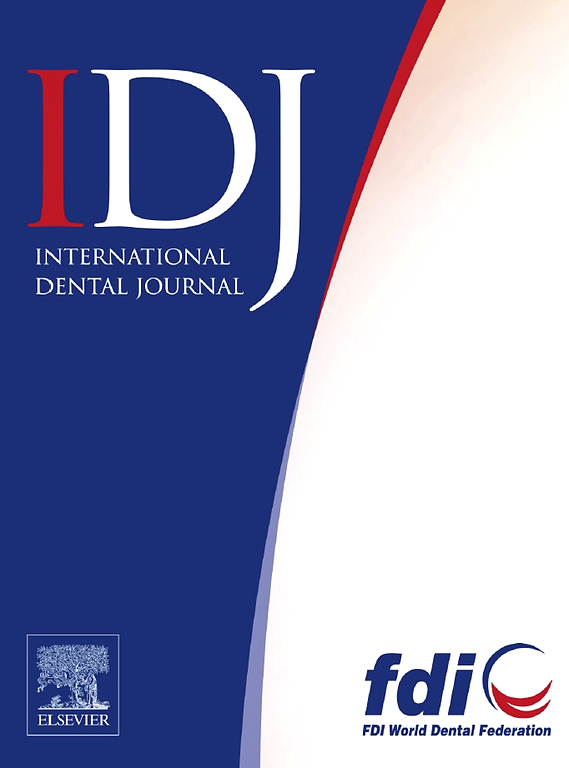从牙科全景x光片自动估计年龄和性别。
IF 3.7
3区 医学
Q1 DENTISTRY, ORAL SURGERY & MEDICINE
引用次数: 0
摘要
背景:年龄和性别估计在法医牙科学中至关重要,传统上依赖于复杂,耗时的方法,容易出现人为错误。本研究提出了一种人工智能驱动的方法,使用深度学习从泰国儿童和青少年的全景x光片中估计年龄和性别。方法:本研究分析了泰国7 ~ 23岁人群的2491张全景x线片中的4627张图像。建立在EfficientNetB0架构上的监督多任务模型被开发出来同时估计年龄和分类性别。该模型使用迁移学习和微调两阶段过程进行训练。在为整个7- 23岁队列建立了初始基线模型之后,随后又建立了2个主要年龄分层模型(7-14岁和15-23岁),以提高预测准确性。所有模型都根据受试者的实际年龄和生理性别进行验证。结果:7 ~ 23岁人群年龄估计模型的均方根误差(RMSE)为1.67,平均绝对误差(MAE)为1.15,预测1年内牙实足年龄差异的准确率为71.0%。年龄分层分析显示,该模型在年龄较小的队列(7-14岁)中表现优异,RMSE为0.95,MAE为0.62,准确率为90.3%。年龄较大的年龄组(15-23岁)的表现明显下降,RMSE、MAE和准确率分别为1.87、1.41和63.8%。性别识别模型对7 ~ 23岁的个体总体表现较好(曲线下面积[AUC] = 0.94,准确率= 87.8%,灵敏度= 89%,特异性= 87%)。与年龄估计相比,年龄较大的队列(15-23岁)的性别识别性能显著提高:AUC为0.99,准确率为94.7%,灵敏度为92%,特异性为98%。结论:这种新型的基于人工智能的年龄和性别识别模型表现出良好的性能指标,表明它有可能作为传统方法的替代方法,作为一种诊断工具,用于表征活着的个体和死者的身体。本文章由计算机程序翻译,如有差异,请以英文原文为准。
Automated Age and Sex Estimation From Dental Panoramic Radiographs
Background
Age and sex estimation, which is crucial in forensic odontology, traditionally relies on complex, time-consuming methods prone to human error. This study proposes an AI-driven approach using deep learning to estimate age and sex from panoramic radiographs of Thai children and adolescents.
Methods
This study analyzed 4627 images from 2491 panoramic radiographs of Thai individuals aged 7 to 23 years. A supervised multitask model, built upon the EfficientNetB0 architecture, was developed to simultaneously estimate age and classify sex. The model was trained using a 2-phase process of transfer learning and fine-tuning. Following the development of an initial baseline model for the entire 7 to 23-year cohort, 2 primary age-stratified models (7-14 and 15-23 years) were subsequently developed to enhance predictive accuracy. All models were validated against the subjects' chronological age and biological sex.
Results
The age estimation model for individuals aged 7 to 23 years yielded a root mean square error (RMSE) of 1.67 and mean absolute error (MAE) of 1.15, with 71.0% accuracy in predicting dental-chronological age differences within 1 year. Age-stratified analysis revealed that the model showed superior performance in the younger cohort (7-14 years), with RMSE of 0.95, MAE of 0.62, and accuracy of 90.3%. Performance declined substantially in the older age group (15-23 years), where RMSE, MAE, and accuracy values were 1.87, 1.41, and 63.8%, respectively. The sex recognition model achieved good overall performance for individuals aged 7 to 23 years (area under curve [AUC] = 0.94, accuracy = 87.8%, sensitivity = 89%, specificity = 87%). In contrast to age estimation, sex recognition performance improved notably in the older cohort (15-23 years): AUC of 0.99, 94.7% accuracy, 92% sensitivity, and 98% specificity.
Conclusion
This novel AI-based age and sex identification model exhibited good performance metrics, suggesting the potential to serve as an alternative to traditional methods as a diagnostic tool for characterizing both living individuals, as well as deceased bodies.
求助全文
通过发布文献求助,成功后即可免费获取论文全文。
去求助
来源期刊

International dental journal
医学-牙科与口腔外科
CiteScore
4.80
自引率
6.10%
发文量
159
审稿时长
63 days
期刊介绍:
The International Dental Journal features peer-reviewed, scientific articles relevant to international oral health issues, as well as practical, informative articles aimed at clinicians.
 求助内容:
求助内容: 应助结果提醒方式:
应助结果提醒方式:


